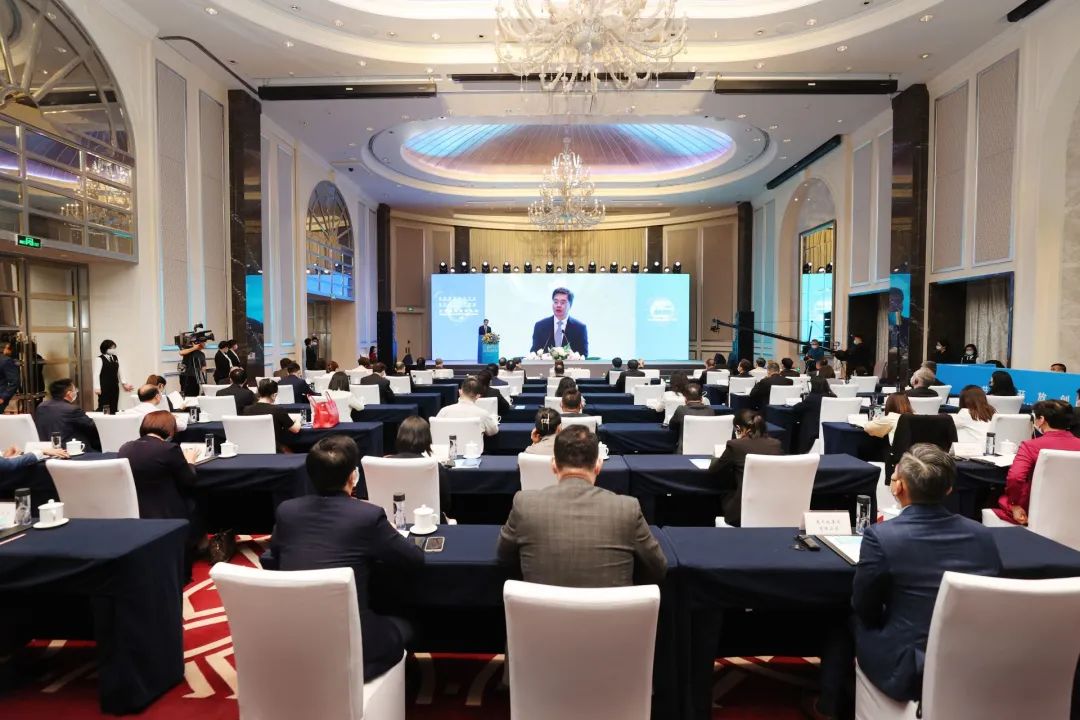
00:00 - 00:00
In order to better promote innovation cooperation among cities, explore the integration of elements of innovation, and share effective ways and paths to improve urban governance and competitiveness, on November 18, 2021, the World Innovative Cities Forum was held in Shenzhen.
On the theme of "Jointly Building an Open and Innovative Platform and Rising to Development Challenges of the Times", participants focused on issues that draw global innovative cities’ attention, including open innovation and sustainable development, and discussed innovation and further cooperation together.
01. Frank Ross, Lord Provost of the City of Edinburgh: Innovation is the Core Element of Edinburgh’s Economic Strategy

Lord Provost of the City of Edinburgh was invited as one of the guest speakers. He introduced that Edinburgh is the capital of Scotland and one of the most economically developed cities in the UK. “Innovation is the core of Edinburgh, which has driven the development and the growth for several centuries and is still the core element of our economic strategy.” said Mr. Frank Ross,, introducing the city as an “Innovation Center”.
Mr. Frank Ross briefly introduced Edinburgh’s current economic strategy - striving for “sound growth”, which enables Edinburgh to thrive as a city filled with innovative institutions and enterprises, thereby creating jobs. This strategy focuses on inclusiveness and innovation, centering on strong cooperation between Edinburgh’s major institutions and extending to international partners.
“Edinburgh’s strategy is based on sound growth and data-driven innovation, and it is achieved through collaboration.” Frank Ross said that in this era full of challenges, we cannot work in isolation but should seize every opportunity to cooperate with international partners. Today, we can communicate and meet through the innovative use of digital technology. It is collaborative strategies and digital innovation that enable us to achieve co-prosperity in the future.
02. Jacek Jaśkowiak, Mayor of Poznan: Switching from Car Travel to Bicycle Travel is an Innovation
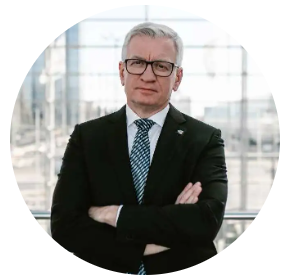
Mr. Jacek Jaśkowiak, Mayor of Poznan, introduced that Poznan is located in central and western Poland and is one of the largest industrial, transportation, cultural, educational, and scientific research centers in Poland. “In some countries, with the continuous development of metropolises and the increasing proportion of urban residents, metropolises play an increasingly important role.” Mr. Jaśkowiak believes that such a trend has forced the city government to take a series of actions to facilitate the life, work, study and daily activities of new urban migrants.
“Looking back on the past one or half a century, innovation may equal to the use of cars, but now the trend has changed”, said Mr. Jaśkowiak. He believes that it is no longer a wise choice for residents to switch from bicycle to car travel. On the contrary, if people give priority to using bicycles, it will be a true innovation, for the use of motor vehicles comes with an environmental cost. At the end of his speech, Mr. Jaśkowiak called for an optimal consideration of the interests of the whole society when designing and planning cities.
03. Clemens Baumgartner, Deputy Mayor of Munich: Promoting Innovation Requires a Healthy Innovation Ecosystem

Mr. Clemens Baumgartner, Deputy Mayor of Munich, introduced that Munich is the third largest city in Germany as well as the capital of Bavaria. As the economic center of southern Germany, Munich has the headquarters of BMW, Siemens, Allianz Insurance, and other large companies.
“Promoting innovation requires a healthy innovation ecosystem.” Said Mr. Clemens Baumgartner. There are five types of participants in Munich's innovation ecosystem, including research centers, universities, entrepreneurship centers, promoters and innovation platforms, and enterprises. Clemens Baumgartner introduced that there are 17 universities in Munich, which ensures the supply of high-quality talent. This is also the reason why science and technology centers and scientific enterprises are willing to set up R&D institutions in Munich. Moreover, all major universities in Munich have their own entrepreneurship centers and run many projects of business incubators and accelerators for start-ups.
“There are a series of entrepreneurship centers in Munich, as well as many international conference and exhibition facilities. We lay special focus on innovation potential, hoping that innovation and scientific research will promote sustainable development.” Mr. Clemens Baumgartner said.
04. Kim Kyung-ho, Deputy Mayor of Gwangyang: Explore New Growth Industries Responding to Global Economic Environment

Mr. Kim Kyung-ho, Deputy Mayor of Gwangyang, introduced that Gwangyang has grown from a backward rural area to the 11th largest port in the world. Mr. Kim Kyung-ho also talked about the development path and future planning of Gwangyang.
He introduced that Gwangyang City, located in the center of South Korea’s south coast, was once a backward rural area dominated by fishery and mining. In 1986, with the settlement of a global iron and steel enterprise, POSCO Gwangyang Iron and Steel Plant, the regional development took a strong first step. At present, the annual throughput of Gwangyang Port has reached 311 million tons, making the port the 11th largest port in the world.
“Today, the steel and iron industry takes up a large proportion of the city's industrial structure, so it is necessary to explore diversified new growth industries that can respond to the rapidly changing global economic environment. To this end, our city, in coordination with the New Deal policy pace of the Korean government, has established an innovation strategy in two directions: the transformation of the industrial ecosystem with the goal of carbon neutrality and the cultivation of new growth industries.” Kim Kyung-ho introduced innovative projects such as the transformation of the industrial ecosystem with the goal of carbon neutralization and building a green rechargeable battery industrial cluster.
05. Kizō Hisamoto, Mayor of Kobe: Innovation is One of the Main Areas of Concern in Kobe
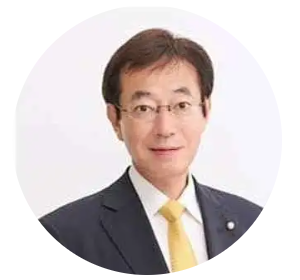
Mr. Kizō Hisamoto, Mayor of Kobe, introduced that the City of Kobe, located in western Japan, is a major international port, a rather diversified city, and a vibrant artistic and cultural center.” Mr. Kizō Hisamoto introduced his city in this way.
Mr. Kizō Hisamoto said that innovation is one of the main areas of concern in Kobe and also one of the important contents of every project of the Municipal Government. Kobe has been chosen by the Japanese government as a global entrepreneurship center to provide young and ambitious entrepreneurs with various education projects, opportunities to implement the POC (proof of concept) project, and seamless support for various innovative enterprises from early to late stage.
“The city of Shenzhen is well known for its spirit of innovation as well as many breakthroughs in cutting-edge fields. It is also a very attractive location for young entrepreneurs and I believe this is crucial for the sustainable development of any city.” Mr. Kizō Hisamoto said that Kobe and Shenzhen have carried out various exchange activities, especially in the field of medical science, for example, BGI’s Japanese headquarter is in Kobe.
06. Tatsuo Igarash, Mayor of Tsukuba: Change People’s Lives through Science and Technology
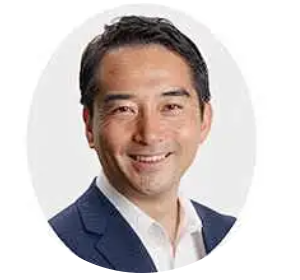
Mr. Tatsuo Igarash, Mayor of Tsukuba, introduced that Tsukuba is in the south of Ibaraki Prefecture, Japan, and is known as Tsukuba Science City. Through the planned relocation of Japan’s national experimental research institutions and educational institutions, Tsukuba Science City has built and developed into a high-level research and education base and the largest scientific and technological stronghold in Japan while evacuating the over-intensive environment in Tokyo.
“Today has 150 research institutions and has a population of 245000, among which 20000 citizens engage in research and development activities. There are 8000 Ph.D. holders, and the density is 10 times as much as Japan’s average.” Tatsuo Igarashi, the mayor of Tsukuba, said at the forum that the mission of Tsukuba is to change people’s lives and make contributions to mankind through science and technology. He introduced several smart civil construction projects which are under way in Tsukuba, such as Internet Voting and Digitalization of Health Management at Schools. Tatsuo Igarashi also revealed that Tsukuba has participated in the “Super City” plan promoted by the Japanese government, which is called Tsukuba Super Science City, providing new options for everyone through technology and creating a community that interconnects among citizens and cities.
07. Lianne Dalziel, Mayor of Christchurch: Cities Play an Important Role in Leading Innovation

Ms. Lianne Dalziel, Mayor of Christchurch, introduced that Christchurch is in the Canterbury Plain in the east of South Island, New Zealand. As the only city leader in the southern hemisphere who spoke at the forum, Mayor Lianne Dalziel of Christchurch also called for cooperation: “The most significant challenges we face today are global ones and if we are to rise to these challenges, global solutions are needed.”
Lianne Dalziel believes that if we want to make changes, we need to adopt different ways of thinking and acting, as well as new ideas and continuous innovation. Cities play an important role in leading innovation, providing strong infrastructure and environment for innovators, and building platforms to help them grow and succeed.
“Here in Christchurch, innovation underpins our version, and as an integral part of modern identity as a city of opportunity for all.” Lianne Dalziel introduced the “Supernode” that Christchurch is promoting, that is, an industrial cluster that gives full play to regional advantages to meet global challenges. Cluster activities bring together enterprises, researchers, and government agencies, focusing on common challenges and goals.
08. Ian Ward, Head of Birmingham City Council: Innovation and Emerging Technologies are Significant to City Development

Mr. Ian Ward, Head of Birmingham City Council, introduced that Birmingham is the second largest international city in Britain after London. “The need for innovation has never been greater and Birmingham is responding by investing in its digital programs.” Ian Ward said that this not only complied with the voice of the public to change the government service model, but also improved the innovation ability of enterprises and promoted economic and social development. This inclusive strategy enables Birmingham to focus on existing problems from a comprehensive perspective and propose innovative and truly beneficial solutions.
“Innovation and new emerging technologies will play a significant role in developing our cities and places.” Ian Ward believes that the COVID-19 pandemic shows that we must develop innovation and embrace new technologies, so that cities can keep pace with the times, cope with unexpected challenges and solve existing problems more calmly. However, innovation is cyclical and needs constant adjustment. In this process, Birmingham has maintained a good cooperative relationship with domestic and international partners, learned from others’ successful experiences, and transformed these experiences into useful strategies that are suitable for Birmingham.
09. Pau Solanilla, Special Assistant to the Executive Vice Mayor of Barcelona: Innovation Should Be the Pillar of the Fortune of our Society and Cities

Mr. Pau Solanilla, Special Assistant to the Executive Vice Mayor of Barcelona, introduced that Barcelona is the second largest city in Spain. Known as the “Pearl of the Iberian Peninsula”, Barcelona is the most famous tourist resort in Spain. Barcelona Port is the largest port along the Mediterranean coast and the largest container terminal, as well as the largest comprehensive port in Spain.
He said at the forum that Shenzhen and Barcelona are both open and innovative cities. Like many cities in the world, they seek new solutions, new cohesion, and new alliances to meet common challenges.
“Innovation should be the pillar of the Fortune for our society, for our cities in order to be more competitive, more egalitarian and more sustainable.” Pau Solanilla looks forward to meeting with other guests again to discuss human issues and future development.
10. Wallop Suwandee, Chairman of Advisers to the Government of Bangkok: Cooperation is the Key Factor for our Innovation Success

“Bangkok’s success is not only achieved by our own efforts. We need cooperation, which is the key factor for our innovation success.” Dr. Wallop Suwandee, Chairman of Advisers to the Government of Bangkok, said at the forum.
Dr. Wallop Suwandee introduced that Bangkok has planned seven innovation areas to improve the quality of life of its citizens through innovation. For example, Rattanakosin Island, located in the center of Bangkok is a commercial and cultural area with a history of more than 200 years, and there are many beautiful buildings.
“We want to preserve the area and we have collaborated with Silpakorn University.” Dr. Wallop Suwandee said that through cooperation with academic institutions such as universities, the above elements have been endowed with new features such as technology, innovation and creativity, moreover, a series of start-up projects such as travel technology, urban technology, and financial technology have been carried out. Through these projects, the government has connected with local communities, educational institutions, and the whole city. Thus, this commercial and cultural area was built.
11. Zhang Xiang, Foreign Academician of the Chinese Academy of Sciences, President of the University of Hong Kong: Innovation Needs a New Higher Education
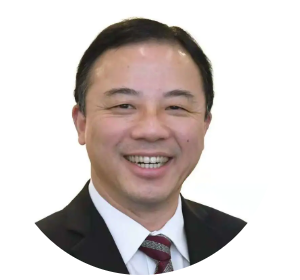
Mr. Zhang Xiang, the foreign academician of the Chinese Academy of Sciences and President of the University of Hong Kong, said at the forum, “Innovation requires new higher education.”
Zhang Xiang believes that higher education is the most critical step to realizing science and technology. For higher education in the future, we need an innovative mode of thinking, a loose and cooperative environment, and tolerance for innovation. We should also encourage young scholars to study independently and challenge academic authority. He also called on the government and scientific research institutions to have a long-term layout for innovation and scientific research in universities.
“The real innovation is scientific and leading because only when there is innovation in basic theories and principles, can there be revolutionary discovery and technological innovation.” Zhang Xiang proposed that HKU in Shenzhen is to contribute its advantages of source innovation and technology research to Shenzhen and Hong Kong, attract international top talents and make contributions to creating source innovation.
12. Freddy Boey, Executive Vice President of the National University of Singapore: How should Universities Establish a Deep Science and Technology Start-up Ecosystem?

How should universities establish a deep science and technology start-up ecosystem? Mr. Freddy Boey, Executive Vice President of NUS, shared his experience of NUS.
“Now our entire campus has become an innovation center. These innovations are inseparable from experiments and incubation. We expect to accelerate the implementation and application of these projects in the incubation center.” Mei Yanchang then introduced the “Innovation Project of Postgraduate Research”, which focuses on graduate students and researchers doing scientific research.
“Why do we focus on researchers and students? Such focus helps us quickly deploy early investments and help us screen high-quality start-ups and projects.” Mei Yanchang said that there are now 60 in-depth start-ups, and the goal is to reach 100 by 2022.
13. Laura Citron, CEO of London & Partners: More Inclusive Ecosystem Accelerates the Transformation of Innovation Achievements

Ms. Laura Citron, CEO of London & Partners, introduced that London & Partners is an official agency that helps London achieve business growth and promote the economy of the destination. “We are a limited company with the mayor as a shareholder.”
“Our mission is to create economic growth in London that is sustainable, resilient, and inclusive.” Laura Citron said that although many economic sectors in London have been severely hit by the pandemic, some high growth sectors are not only resilient, but also flourishing. For example, in the first half of 2021, venture capital investment in London’s financial technology industry set a record, and financial technology companies headquartered in London raised more venture capital in just six months than in any other year.
“When London cooperates with other cities, shares knowledge and learns new things, it is in the most brilliant period.” Laura Citron believes that Shenzhen is the best partner and believes that London and Shenzhen will continue to maintain excellent cooperation. London & Partners looks forward to supporting the co-construction of an innovation cooperation platform in the future.
14. Yao Zhenguo, Senior Vice President of Siemens Energy and CEO of Greater China: Siemens Will Accelerate the Transformation of Innovation

Mr. Yao Zhenguo, senior vice president of Siemens Energy and CEO of Greater China, introduced that Siemens Energy is one of the world’s leading energy technology companies. “Global energy cannot fight alone in the future. Only by making the ecosystem more inclusive can we achieve deeper multilateral international cooperation and better accelerate the transformation of innovative achievements.”
Yao introduced that Siemens Energy is working with customers, industry partners, universities, and research institutions to build an open ecology around the world. In January 2021, Siemens Energy Shenzhen Innovation Center was established and will focus on source innovation, with extending clean energy technology research and innovative business development.
15. Guo Yi, global partner of Boston Consulting Group: Innovation Brings Persistent Impetus to a City

Mr. Guo Yi, the global partner of Boston Consulting Group, said that only innovation can give a city the impetus to persevere, and nowadays, most of the successful cities at home and abroad are changing to the city development mode of 'technological innovation'.
Guo Yi proposed that the development of all innovative cities needs to go through a smile curve. This smile curve is from industrial upgrading and technological breakthrough to the building of a livable and business friendly environment, and then through the building of a business and living friendly environment, it feeds back the industries, innovation capabilities, and the building of innovation platforms.
He also brought a roadmap for Shenzhen, starting from the clarification of the technology explosion point, to form a capital reservoir with science and technology as the leading connotation, to create an industrial environment and industrial platform, to drive the overall development of the industry, and finally to build a people-oriented urban atmosphere. "I hope that in the near future, we can help Shenzhen to walk along this perfect curve and become a new generation of the city standing in the East with innovation as its sustainable development force."Guo Yi said.
16. Beate Trankmann, the Representative of the United Nations Development Programme in China: The Summary of Shenzhen Sustainable Development Report (2021) Shows that More Than Half of Shenzhen’s Indicators Have Reached the Sustainable Development Goals
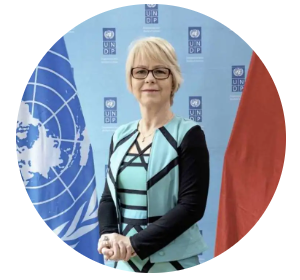
At the forum, Ms. Beate Trankmann, the representative of the United Nations Development Programme in China, shared the situation of global sustainable development and the practice of sustainable development in Shenzhen. She said that the process of achieving sustainable development goals are hindered by tiple crisis, which are the COVID-19 pandemic, the rising global temperature and the decline of the world’s biodiversity. To overcome these problems requires new ways of thinking and innovative solutions to achieve structural changes at the systematic level. In particular, many technologies offer new ways to address complex global challenges, and cities play a key role in developing such technologies and are at the forefront of innovation for sustainable development.
At the meeting, the Research Institute for Eco-Civilization, Chinese Academy of Social Sciences and the United Nations Development Programme jointly released the Summary of Shenzhen Sustainable Development Report (2021). The data in the report shows that by 2020, Shenzhen’s overall achievement rate of the 2030 goals is 91.5%. More than half of the indicators have reached the 2030 goals, and 77% of the indicators have progressed higher than expected. “These achievements have laid a solid foundation for Shenzhen to help promote the realization of the 2030 Sustainable Development Goals, and further highlighted the value of Shenzhen to be a sustainable development innovation center supporting China and the Asia Pacific region.” Beate Trankmann said.
The report summarized the measures taken by Shenzhen to implement the sustainable development goals: efficient utilization of resources, ecological environment governance, construction of healthy Shenzhen, modernization of social governance, construction of supporting service system and diversified talent support system. The report also put forward five experiences of sustainable development in Shenzhen: defining top-level design and strengthening the implementation mechanism; leading transformation and development by innovation to achieve high-quality economic growth; adhering to the basic ecological control line, believing a beautiful environment is also a productive force; creating diversified, inclusive, equal and free production and living environment; keeping open cooperation and sharing development dividends.
“For Shenzhen, this is a spirit of ‘Dare to be First in the World’.” Beate Trankmann hopes that the report can help policy makers in Shenzhen assess the implementation progress, address challenges, further give play to the role of innovation, and make better progress based on the national sustainable development agenda innovation demonstration area.

